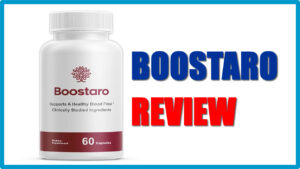
When it comes to managing healthcare costs, generic drugs often flaunt their budget-friendly stickers. They’re seen as the knights in shining armor for patients looking to save a few bucks while still getting their essential medications. However, as we dig deeper into the price puzzle of generic drugs, we discover a landscape that isn’t as simple as it seems. So, let’s embark on a cheerful exploration of why generic drugs aren’t always the cheaper option.
The Price Puzzle: Unpacking Generic Drug Costs with a Smile
Navigating the world of generic drug pricing can feel like a scavenger hunt, where not all treasures are as valuable as they appear. While generics are typically touted as the budget alternatives to brand-name medications, it’s important to recognize that their prices can vary significantly from one pharmacy to another. Factors such as location, pharmacy operations, and even insurance plans contribute to the price fluctuation, making them a bit of a wild card in our shopping cart. So, while one pharmacy might offer a generic for a song, another may charge a pretty penny!
Additionally, the manufacturing process of generics can influence pricing. While they are often cheaper to produce once the brand-name patent expires, some generic manufacturers might invest in higher-quality raw materials or refined production techniques. This can lead to a price tag that reflects their commitment to quality. Thus, the cost of a generic drug can be a combination of various influences, making it not so straightforward.
And let’s not forget about market competition! In a perfect world, a plethora of generics would drive prices down, but that’s not always the case. When only a few companies are producing a particular generic drug, prices can surprisingly stay high due to limited competition. So, while generics are often perceived as the affordable option, the reality is a tangled web of variables that makes pricing a complex puzzle.
Beyond the Label: When Generic Isn’t the Wallet-Friendly Choice
As we dive deeper, let’s explore when choosing a generic might not be the most cost-effective decision. For starters, there could be hidden costs associated with switching to a generic. In some cases, patients may experience different side effects or a variance in effectiveness. This may lead to additional consultations with healthcare providers, extra lab tests, or even the need to revert to brand-name drugs, ultimately costing more in the long run.
Moreover, insurance coverage plays a significant role in this saga. Some insurance plans might favor brand-name medications over generics, especially if the brand name has a lower copay. This can create a situation where, despite the initial perception of generics being cheaper, the reality is that they could end up costing more, especially when considering out-of-pocket expenses. It can feel like a game of chess, where unexpected moves can lead to unforeseen costs!
Let’s not forget the emotional toll that can come with medication changes. Patients often prefer the medications they know and trust. Making a shift to a generic may not only disrupt a patient’s routine but could also lead to worry and uncertainty. The potential for increased doctor visits or health concerns adds to the overall cost, highlighting that the label alone doesn’t tell the whole story.
In conclusion, while generic drugs often shine in their role as cost-saving champions, the reality is anything but simple. From the complex pricing structures to the hidden costs of switching medications, it’s crucial for patients to approach their medication choices with informed eyes and open hearts. The next time you go shopping for medicine, remember that the true value lies beyond the label—sometimes, a little extra research can save you a lot more than just a few dollars! So, keep smiling and stay informed on your healthcare journey!



